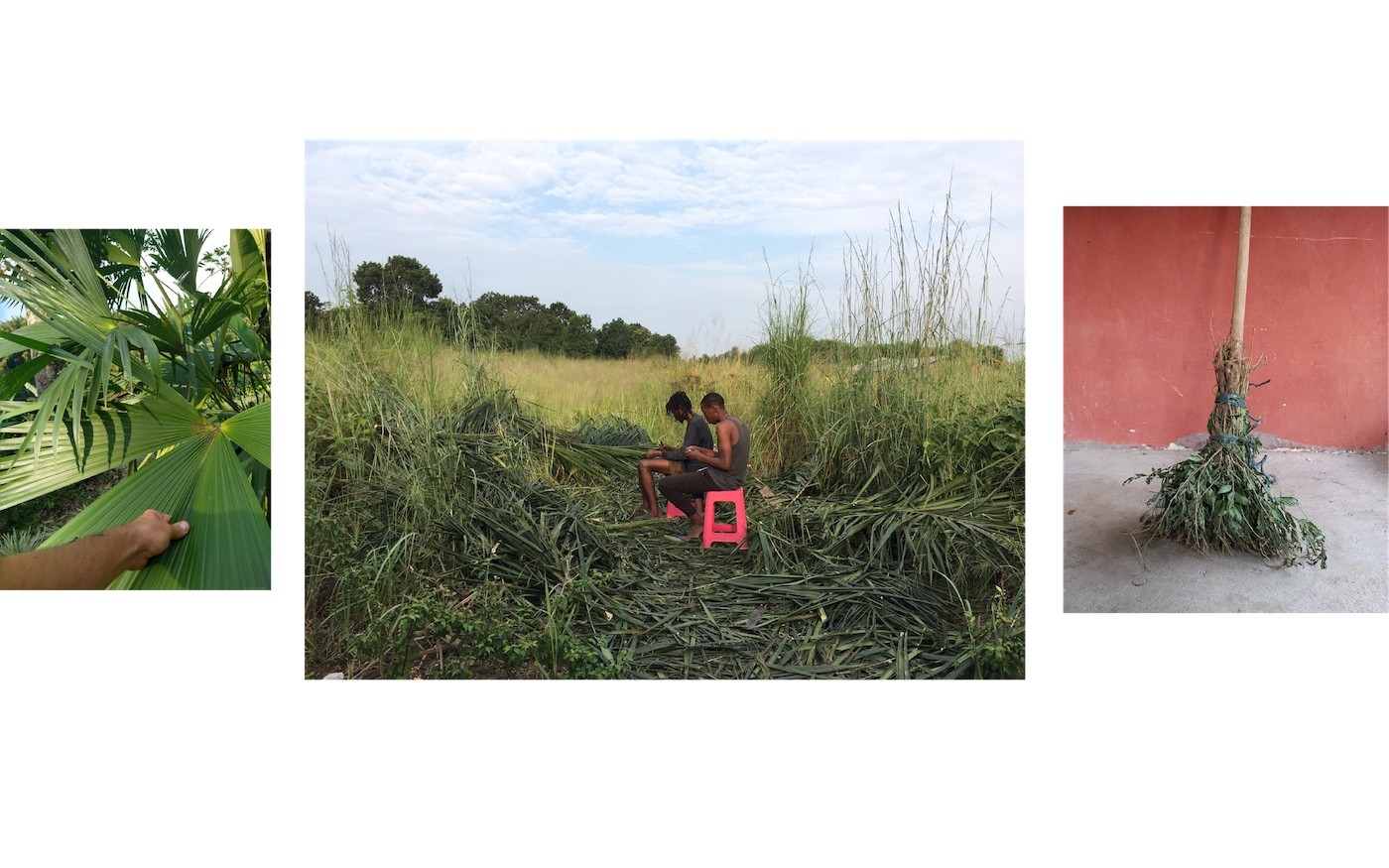The Stuff That New Networks Are Made Of
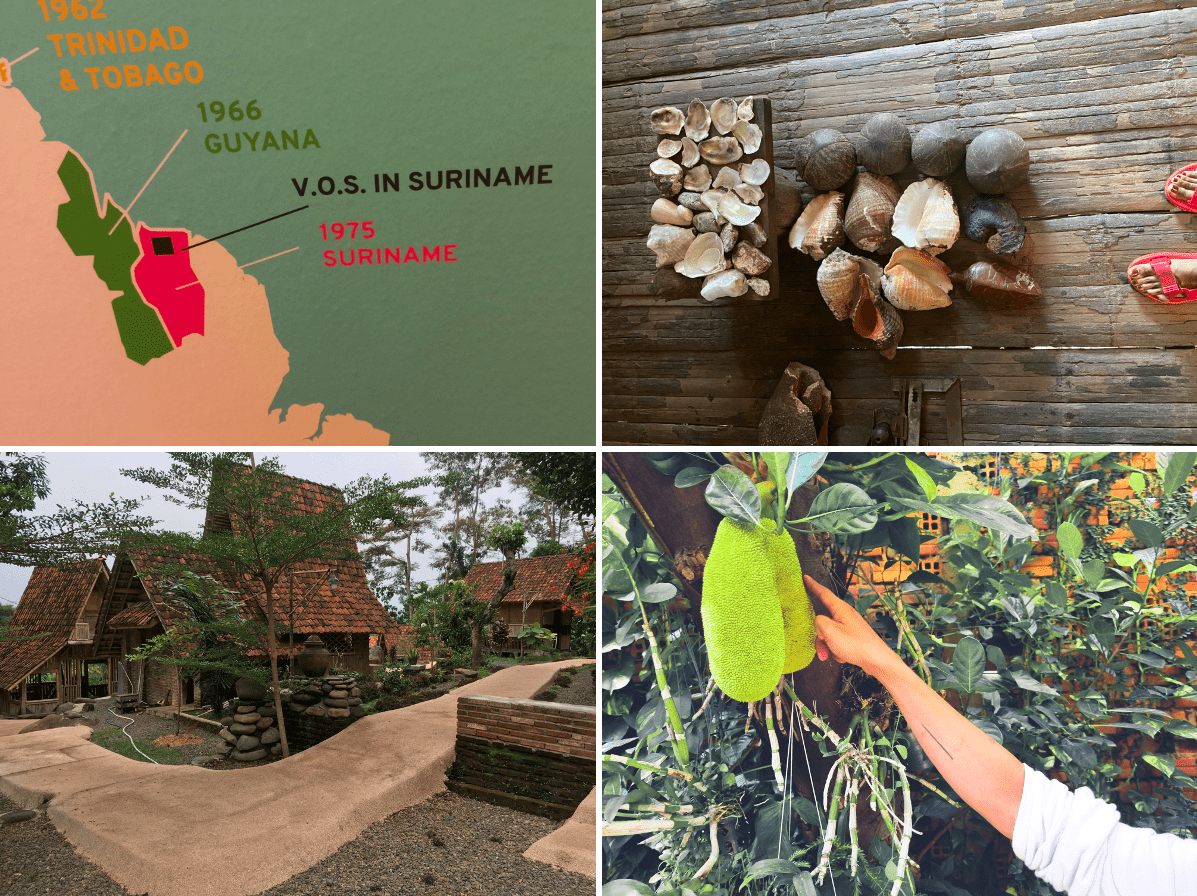
18 August 2022
Magazine C& Magazine
Words Ann Mbuti
8 min read
Ann Mbuti looks behind the scenes of a joint project between C& and documenta fifteen that has resulted in four very unique print issues.
Through the appointment of ruangrupa as its curators, this year’s documenta has embraced the trend towards collectivity in art. Collective action, shared resources, and fair distribution: these are the principles on which the Indonesian collective has based the entire process of the fifteenth edition of the mega art event. Rather than any single topic, the collective practice and experience of art is the focus. Ruangrupa take "lumbung," the Indonesian word for the shared rice barn, and reinterpret it as a metaphorical idea which visitors encounter in a variety of forms on site in Kassel.
Anyone who has visited since mid-June quickly sees this celebration of collectives and commonality, and how they live through the people who act within them. In keeping with this approach, Weaving Networks: On paper, in places focused on bringing people together: four authors from the C& network Russel Hlongwane, Yina Jimenez Suriel, Gloria Kiconco, and Serine Ahefa Mekoun went to visit four lumbung collectives in different parts of the world, gaining insight into their practice and environment. The aim was not only exchange, but to open up new, meaningful networks that are geographically outside the C& comfort zone and will lead to long-term relationships. It resulted in four editions of the C& print magazine, jointly produced in a way that wove new connections. Produced and printed in the local context of each respective collective, they are distributed regionally and thus in turn open up further networks. Only a small part of these print runs have found their way to Kassel for the international art public.
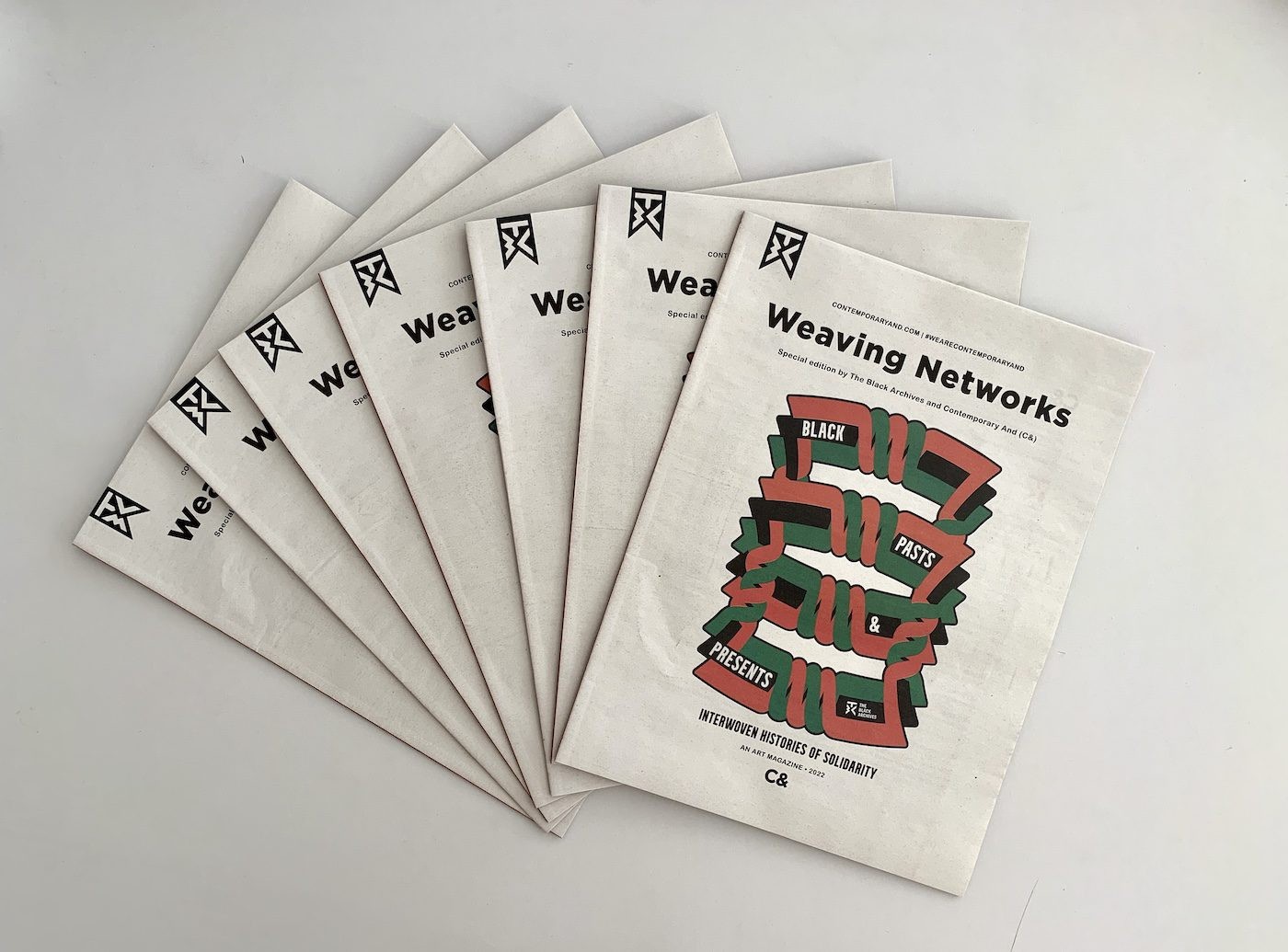
<figcaption> C& Special Print Issue in cooperation with The Black Archives Amsterdam, August 2022. Photo: C&
Hyperlocal, yet global
"As someone coming from a different place, there are certain things that I cannot see," says Russel Hlongwane of the “outside” perspective. The cultural producer from Durban, South Africa, visited the Indonesian village of Jatiwangi, home of the Jatiwangi art Factory, and asked himself: "What are the things that are hidden from my eyes?" JaF is a community-based organization that examines how local life in rural area informs contemporary art and cultural practices. In his own practice, Russel is interested in hyperlocal narratives, specifically how those about Blackness influence its global story. The balancing act between these two levels drew Russel to JaF: the collective's international orientation in the context of documenta and their ongoing hyperlocal practices and events, built up since their founding in 2005. Many of his observations relate to the use of language. The term "village" in the English language, for example, means something very specific in the western understanding. When it is mentioned, certain expectations and images are set in motion. During his stay in Jatiwangi, Russel and the members of the collective looked at how local languages can replace terms in English that become inaccurate when used in local contexts.

<figcaption> Text by Yina Jiménez Suriel, Design by Más Arte Más Accíon
Understanding without a common language
Yina Jimenez Suriel trip, on the other hand, focused on geography. The curator and researcher from the Dominican Republic visited Más Arte Más Acción in Bogotá, Colombia, and met the collective at a turning point in their practice. The non-profit cultural foundation generates critical thinking through art and, after more than ten years of its existence, began to rethink how this could happen through their practice when they accepted the invitation to participate in this year’s documenta fifteen. The methods of Yina's own practice always contribute to the processes of artists and organizations she works with, so as part of her research with MaMa, she included the various communities the collective had already worked with. "I considered the microclimate and the different geographies, in choosing my destinations," Yina says. In addition to Bogota, she visited a total of four regions in Colombia. Soon Yina realized that although their geographical distance was huge, the people of MaMa were asking themselves the same questions she was. Despite different foci, their interests spoke the same language.
These overlaps reflect a core principle of Weaving Networks, which carries its basic idea in its name. It puts joint work, networked conception, and production in the foreground. In 2017, there had been a previous collaboration between C& and the documenta team at the time, which likewise resulted in a print edition. For the current documenta, instead of a classic publication on the content of the exhibition, the collaboration was intended to emphasize networking – something that is central to both C& and documenta fifteen. How can networks be put into practice? How can new connections be formed?
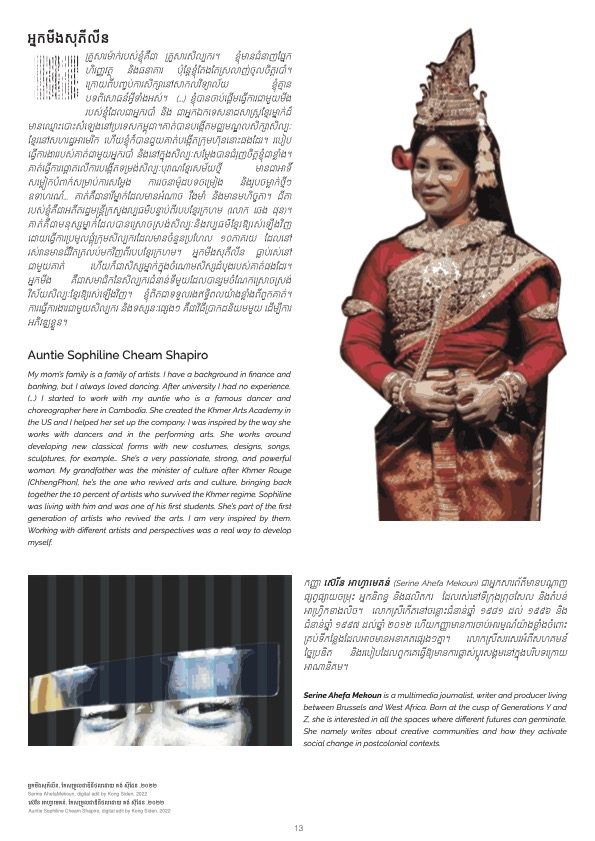
<figcaption> Text by Serine Ahefa Mekoun, Design by Sa Sa Art Projects
Stories that mean the world
New connections also drive Serine Ahefa Mekoun. Based in Belgium and Togo and with a practice that mediates between Europe and West Africa, she is concerned with the survival strategies adopted by emerging art scenes. For her, language plays an important role in survival, expressing the relationship to a dominant guiding culture that automatically demands positioning. Serine visited Sa Sa Art Projects in Cambodia's capital Phnom Penh and invited the members of the collective to participate in a round of storytelling. The artist-run space has existed since 2010 and is dedicated to experimental and critical contemporary art practices: a weakness in contemporary art education and engagement motivated them to create a space for critical discussion. And although Sa Sa has been around for over ten years, its members got to know each other better while sharing their stories. Core terms and ideas from these moments of sharing now converge in a glossary that Serine has compiled. It gives an insight into the verbal expression of this experimental, dynamic project and shows how much imaginative significance lies in seemingly random anecdotes.
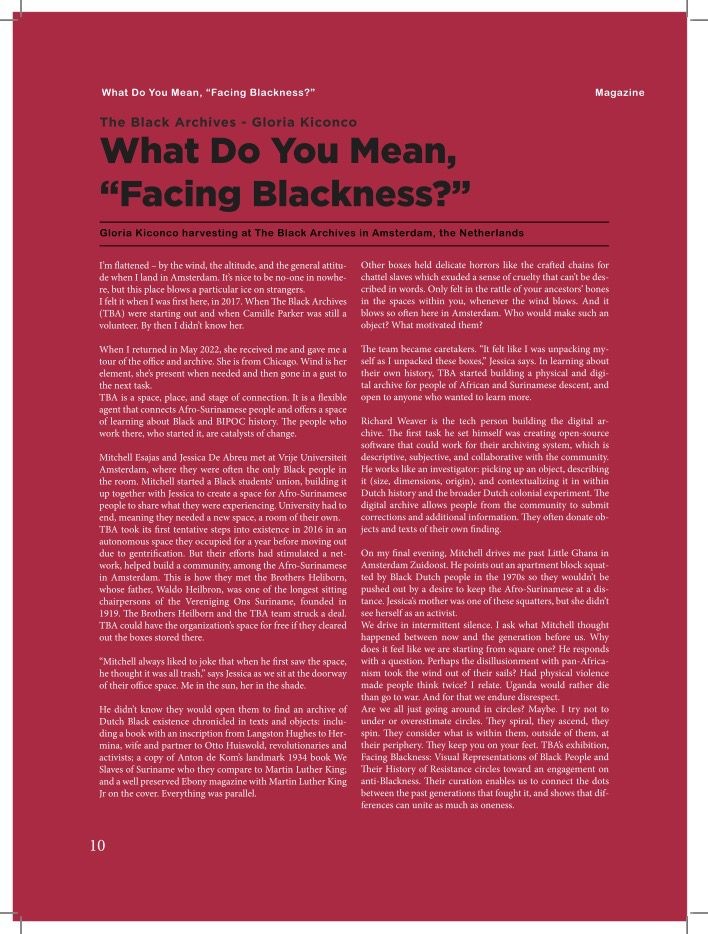
<figcaption> Text by Gloria Kiconco, Design by The Black Archives
At the borders of the global network
For Gloria Kiconco, a random encounter was to be the highlight of her stay in Amsterdam. The Ugandan art writer went to the Netherlands to visitThe Black Archives, which is dedicated to documenting the history of Black emancipation movements and individuals in the country. Their current exhibition, Facing Blackness (on show until 23 December 2022) deals with the visual representation of Black people and their history of resistance, and thus helps realize one of TBA's main objectives: making Black history visible. At the exhibition, Gloria unexpectedly met Jennifer Tosch, founder ofBlack Heritage Tours, which explain the racial history of Amsterdam and how that history is inscribed in its architecture. “Her tour really helped put the work of The Black Archives into a global context,” Gloria explains. “TBA captures global networks in the 1960s and 1970s by showing exchanges between Black writers, academics, and leaders in the US and other countries with those in the Netherlands. That type of connection was lost after the 1970s and 1980s, but is restored through access to the online archive of TBA and through the platforms they create for artists and others to learn and exchange knowledge." Gloria faced obstacles to the planned global exchange even before her trip started, however. As a Ugandan writer, getting a visa to a European country was a huge challenge. Unattached, without family or significant financial reserves, she found it was unclear whether it would even be possible, despite all the official papers and invitations she had. Though shorter than planned thanks to delays, Gloria’s stay included spending time at the TBA’s physical archive, in a building that is one of the few Black-owned ones in the city, and she learned first-hand how it came to be founded. “Despite the difficulties, in the end, an exchange between TBA and me was possible – just like the connections they captured in their archive,” Gloria says. “That’s what makes it relevant.” Yet ultimately the logistical difficulties that stretched over two months took up much of her attention – a sobering reality check for global networking.
As different as the authors' experiences are, all four encountered certain similar elements outside their established contexts. Shared questions, similar challenges, and the unifying experience of being part of the Global South created unexpected connections between collectives in different parts of the world. "People from the Global South are more in exchange with Europe than with each other," Russel remarked during his research. "But putting those conversations aside, what are our concerns in relation to each other?" Weaving Networks explored such concerns and created new routes for exchange about them – even beyond this year’s documenta.
Read the full issues made in cooperation with the collectiveshere. Ann Mbuti is an art writer and cultural publicist based in Zurich, Switzerland. Her work connects the dots in the arts and culture that form a larger picture of the contemporary.
Read more from

Irmandade Vilanismo: Bringing Poetry of the Periphery into the Bienal

I Am Monumental: The Power of African Roots
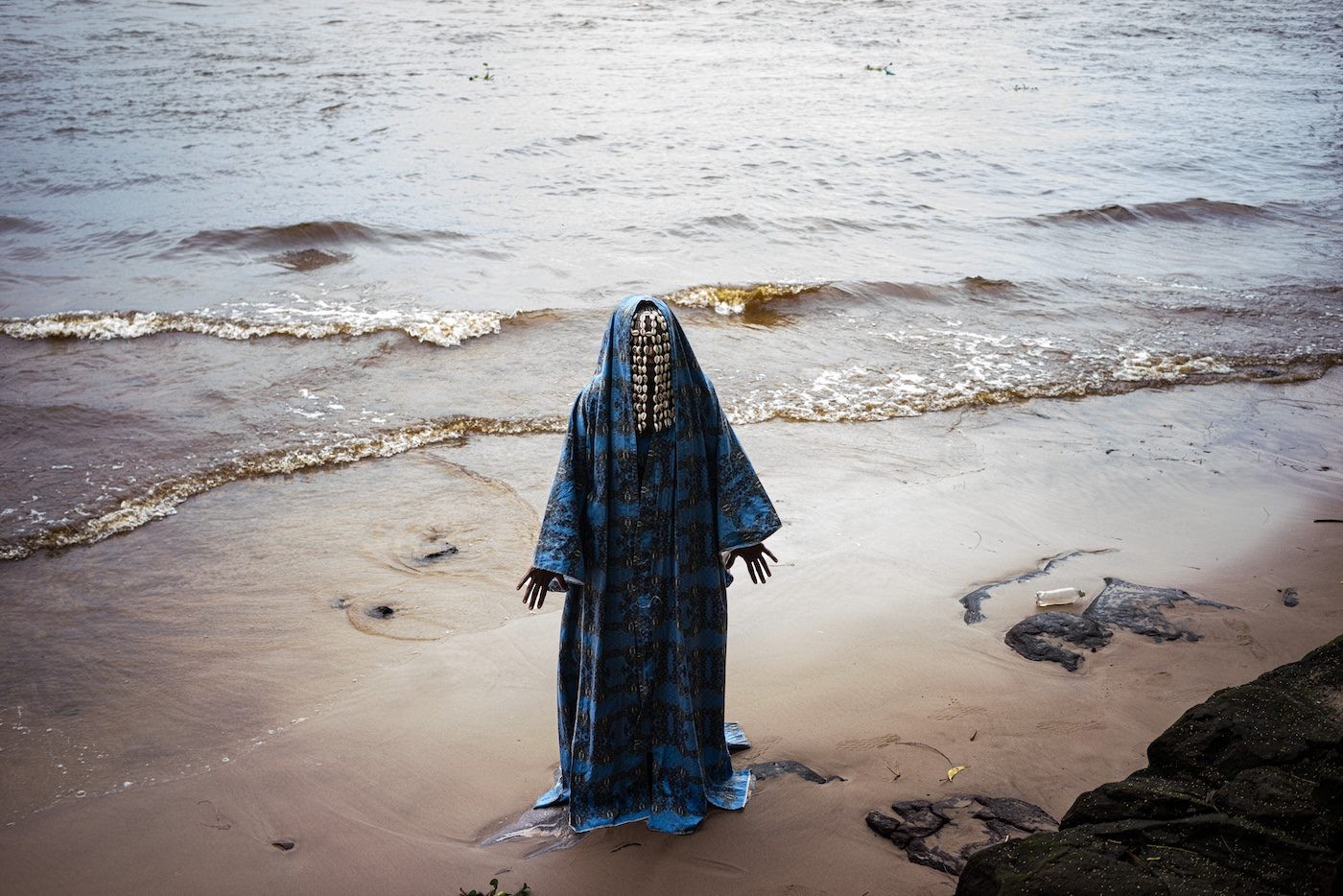
Fundação Bienal de São Paulo Announces List of Participants for its 36th Edition
Read more from
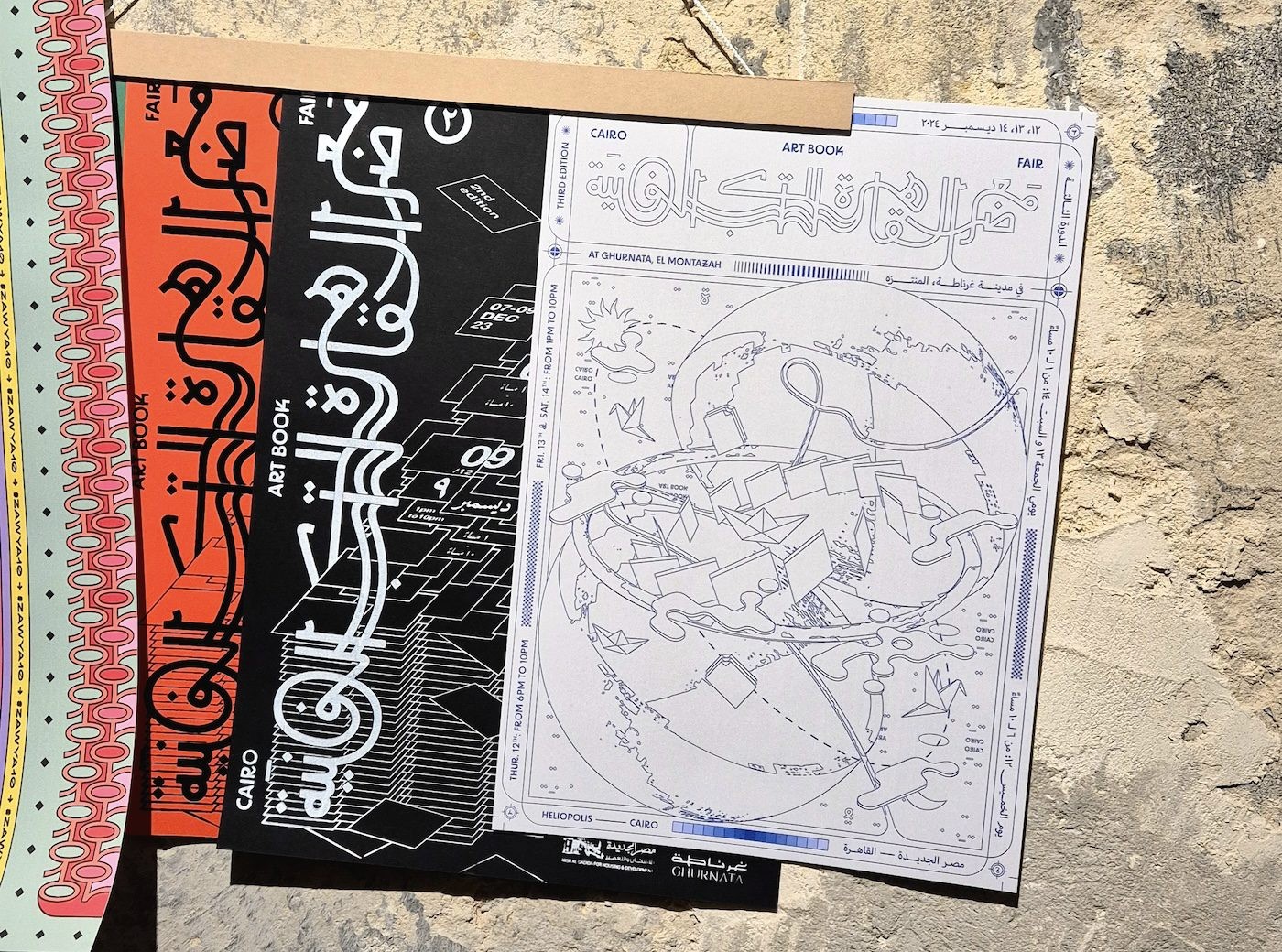
Mapping Literary Circuits with Bao Books in Tunis and Cairo

OtherNetwork
